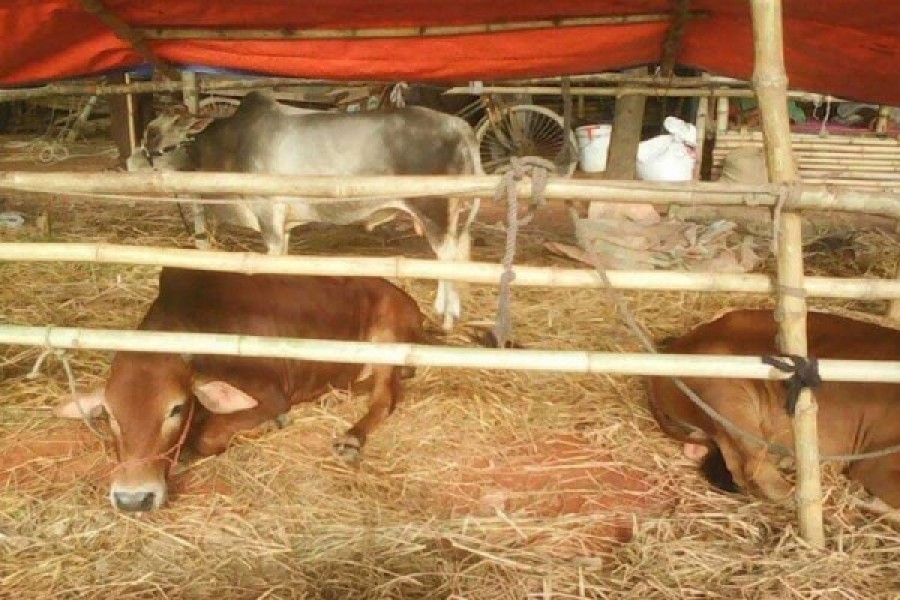
Published :
Updated :

The country's livestock sector, particularly dairy farm, has marked a remarkable transformation over the past few years. Both cattle rearing and dairy development have taken off at a tremendous pace. The country may not have become self-reliant in terms of its overall annual requirement of red meat but at least there was no dearth of locally produced animals during the holy occasion of Eid-ul-Azha. Milk production has also witnessed a significant improvement over the years and more importantly the potential was looking bright until the controversy over the presence of bacteria, antibiotics, lead, cadmium and detergent in both pasteurised packet and open varieties has lately underlined the necessity for stepped-up vigilance over the staple nutrient's quality.
In this context, comes a piece of refreshing news that the BRAC Bank Limited and Green Delta Insurance Company Limited have jointly launched a livestock insurance scheme for cattle farmer, the country's first-ever such facility. Cattle farming has developed largely without the introduction of modern technology to aid it in its various areas. But the pioneering move for risk coverage in livestock farming signals modernisation, and with it, the ground is prepared, one would hope, for adoption of modern implements. The insurers will be always on the look out to ensure that the insured animals get the best of care for their healthy growth. Also when a large number of cattle is reared by farmers, there is the possibility of a mix-up. Near-field communication (NFC) devices attached to the collar of an animal can easily be of help in resolving a dispute over its ownership and importantly in the matter of settlement of claims.
However, the most important element will be the insurance coverage when animals fall sick, die in an accident or of diseases. At times farmers' financial positions seriously worsen on account of their domesticated animals' illness or death. Even the death of a suckling calf can leave an adverse impact on a farmer's livelihood. If such isolated individual farmers also can be covered by the insurance scheme, which we hope it would, then nothing like it. In fact, such farmers need the scheme more than large dairy farms in a normal situation. In times of animal diseases of an epidemic proportion, it is a completely different equation. More to the point, however, is the extension of the scheme to cover the risks of livestock losses through natural calamities. For it needs hardly any elaboration that floods and cyclones wreak a havoc on livestock resources.
Now that the insurance policy has been initiated, the message of its benefit must be disseminated in intelligible language among farmers -- not all of whom are even moderately literate, let alone educated. The scope and range of the insurance coverage have not been made explicit. Will it cover all regions of the country or any farmers willing to adopt the policy? Now that the scheme is there, others will come forward with similar ventures. What will prove a deciding factor is a successful implementation of the scheme. This will show the way for others.


 For all latest news, follow The Financial Express Google News channel.
For all latest news, follow The Financial Express Google News channel.